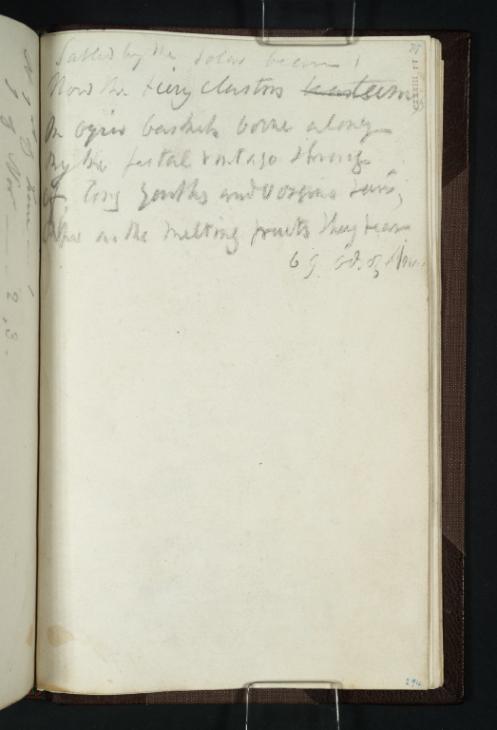References
How to cite
Matthew Imms, ‘Inscription by Turner: Lines from Thomas Moore’s Translation of Anacreon’s Odes ?1814 by Joseph Mallord William Turner’, catalogue entry, July 2014, in David Blayney Brown (ed.), J.M.W. Turner: Sketchbooks, Drawings and Watercolours, Tate Research Publication, September 2014, https://www

